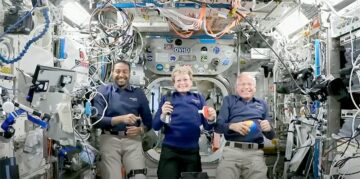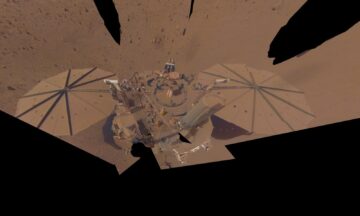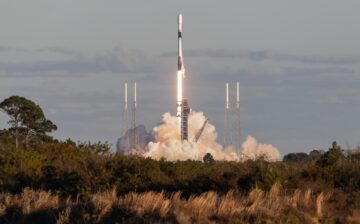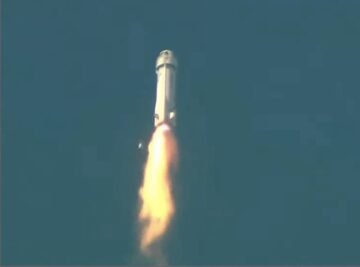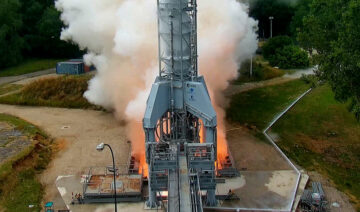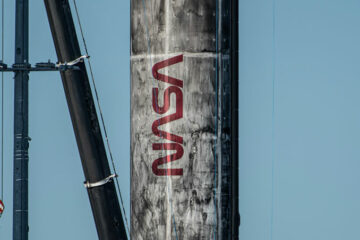[embedded content]
A Falcon 9 rocket carrying 22 Starlink satellites, delayed by upper level winds and held up for the Falcon Heavy launch of NASA’s Psyche, is scheduled to liftoff from Cape Canaveral’s pad 40 at 7:01 p.m. EDT (2301 UTC) on Friday night.
The U.S. Space Force’s 45th Weather Squadron, based at Cape Canaveral, on Thursday predicted a 60 percent chance of acceptable weather for the first of today’s launch opportunities which improves to 80 percent chance at the end of the window.
A launch attempt on Oct. 8 was aborted with just 23 seconds left on the clock. SpaceX said the delay was due to upper level winds. While a West Coast Starlink launch went ahead a few hours later, SpaceX put the Cape launch on hold at the request of NASA, which wanted to prioritize the Falcon Heavy launch of the Psyche asteroid mission, which launched earlier Friday.
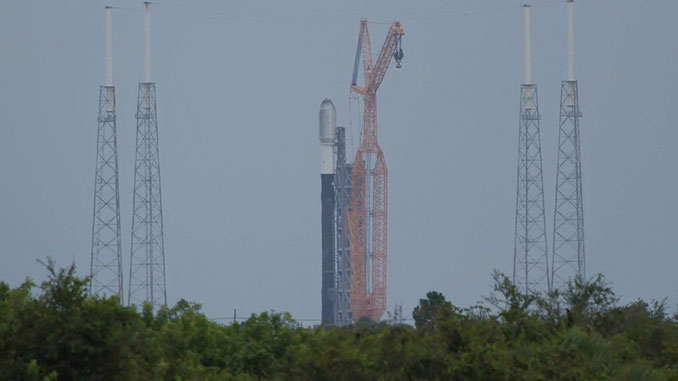
SpaceX has five back up launch opportunities Friday if needed at 7:51 p.m. EDT (2351 UTC), 8:42 p.m. EDT (0042 UTC), 9:32 p.m. EDT (0132 UTC) 10:23 p.m. EDT (0223 UTC) and 10:29 p.m. EDT (0429 UTC). Should Friday night not work out, there are five additional opportunities on Saturday evening.
The Falcon 9 is carrying 22 second-generation satellites for SpaceX’s Starlink internet service. The company announced recently that its now had more than two million subscribers for its broadband internet in more than 60 countries.
After lifting off, the Falcon 9 will head south-east, targeting an orbit inclined at 43 degrees to the equator. The first stage booster, making its eighth flight, will separate from the second stage about two and a half minutes into flight before arcing downrange for a landing on the drone ship A Shortfall of Gravitas. The barge will be stationed in the Atlantic ocean east of the Bahamas about 420 miles (675 km) from Cape Canaveral.
The booster, tail-number B1067, is making its 14th flight.
Two burns of the Falcon 9’s second stage will be required to place the satellites into the required 182 x 176 mile (293 x 284 km) orbit. Separation of the satellite stack is scheduled to occur just over an hour into the flight.
- SEO Powered Content & PR Distribution. Get Amplified Today.
- PlatoData.Network Vertical Generative Ai. Empower Yourself. Access Here.
- PlatoAiStream. Web3 Intelligence. Knowledge Amplified. Access Here.
- PlatoESG. Carbon, CleanTech, Energy, Environment, Solar, Waste Management. Access Here.
- PlatoHealth. Biotech and Clinical Trials Intelligence. Access Here.
- Source: https://spaceflightnow.com/2023/10/13/live-coverage-spacex-to-launch-falcon-9-rocket-carrying-22-starlink-satellites/
- :has
- :is
- :not
- ][p
- $UP
- 01
- 10
- 22
- 23
- 29
- 32
- 40
- 420
- 51
- 60
- 678
- 7
- 8
- 80
- 9
- a
- About
- acceptable
- Additional
- ahead
- an
- and
- announced
- ARE
- Asteroid
- At
- attempt
- back
- Bahamas
- based
- BE
- before
- booster
- broadband
- burns
- by
- cape
- carrying
- Chance
- Clock
- Coast
- company
- content
- countries
- coverage
- delay
- Delayed
- drone
- due
- Earlier
- East
- Eighth
- embedded
- end
- evening
- falcon
- Falcon 9
- few
- First
- five
- flight
- For
- Friday
- from
- had
- Half
- head
- heavy
- Held
- High
- hold
- hour
- HOURS
- http
- HTTPS
- if
- image
- improves
- in
- Inclined
- Internet
- into
- ITS
- jpg
- just
- landing
- later
- launch
- launched
- left
- Level
- lifting
- live
- Making
- max-width
- million
- minutes
- Mission
- more
- Nasa
- needed
- night
- now
- occur
- ocean
- Oct
- of
- off
- on
- opportunities
- Orbit
- out
- over
- pad
- percent
- Place
- plato
- Plato Data Intelligence
- PlatoData
- player
- predicted
- Prioritize
- put
- recently
- request
- required
- rocket
- s
- Said
- satellite
- satellites
- saturday
- scheduled
- Second
- seconds
- separate
- service
- shortfall
- should
- Space
- spaceflight
- SpaceX
- stack
- Stage
- stands
- starlink
- subscribers
- targeting
- than
- that
- The
- The Bahamas
- There.
- thursday
- to
- today’s
- two
- u.s.
- UTC
- Video
- wanted
- was
- Weather
- went
- West
- which
- while
- will
- window
- winds
- with
- Work
- work out
- X
- youtube
- zephyrnet

